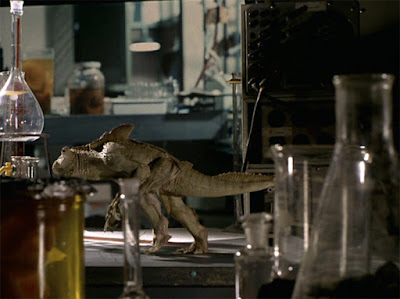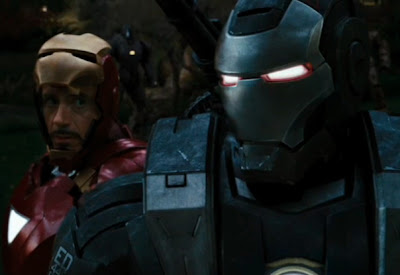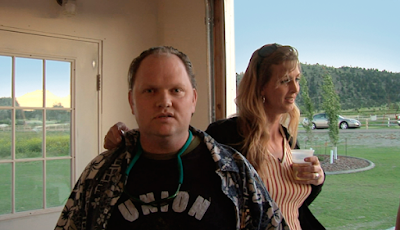Every time I revisit Joe Dante's Piranha (1978), I can't help but think that it's the living end of the New World Pictures eco horror films. Dante, screenwriter John Sayles, and producer Jon Davison, provide a movie that has all of the elements demanded by the drive-in audience of the day: blood, boobs, a social conscience (to assuage the guilt of wallowing in an exploitation film like this one), anti-establishment posturing, the whole nine yards. Further, the film doesn't even try to "transcend" these elements, whatever that means. No, it positively wallows in them. This isn't really any different from other New World eco horror films like Frogs and Humanoids from the Deep. I'll grant you all of that. But these particular filmmakers are too smart for that game. While it wallows in the conventions of a stock drive-in rip-off of Jaws (the filmmakers prefer that it's a rip-off of The Creature from the Black Lagoon, which it specifically name-checks), it's also a sly commentary on them. It's the exploitation film as meta-text. Dante has subsequently proven that no one does this kind of thing better than he does. This goes a little bit beyond homage. It seeps into the very structure of the film.

One example: Dante is extraordinarily adept at the match cut, in which the first image of the next scene is a comment upon the last. In some cases, he has this reversed, and some cuts are comments on scenes yet to come. As a result, the first time we see Heather Menzies's character, one of our ostensible heroes, she's playing a Jaws video game. This is a sly dig at the notion that the film is a rip-off of Jaws, but it also matches the mayhem in the film's final act. As I said, commentary and structure both. There's also a Godardian element to this. In the lab at the beginning of the film, there are a number of fish mutants, including a Harryhausen-esque stop motion beastie that has NOTHING to do with the movie. He's a throw in. Why is he there? Because the filmmakers felt like throwing him in, no other reason. It doesn't hurt that he's pretty creepy, and charming at the same time.

I don't know that this is the first of the self-aware horror movies--Wes Craven had already been making them for years at this point--but it's certainly the film that created the template for them: Know the rules, let the audience know that you know the rules, break them in creative ways. Piranha clues in a movie-savvy audience with its opening shot, a steal from another, more famous movie.

Of course, none of this would matter if the film wasn't fun and scary, which it is. It has pretty good fish puppets, courtesy of Rob Bottin. It has fairly engaging performances from its leads. The film is refreshing in so far as our two leads are totally responsible for the disaster, and the film doesn't let them off the hook because they're the protagonists. Beyond Heather Menzies and Bradford Dillman, the film is littered with entertaining character actors: Barbara Steele as a sinister government scientist, Kevin McCarthy as the creator of the piranhas, Dick Miller as a weaselly resort owner, Paul Bartel as a stuck-up summer camp dictator, Belinda Balaski as an unfortunate camp counselor. I met Belinda Balaski recently; I asked her what she did to Joe Dante to make him want to abuse her so in his movies. She kind of laughed at that. Barbara Steele gets the movie's punch line. Ostensibly talking to the press, she assures the audience that there's no danger from the piranhas after they've been dispatched. Of course, Steele is the closest thing to an old-school horror icon in this movie. She's an actress known for portraying sinister characters. Would YOU trust this face as she tries to reassure you?

I don't think I would.
There's also a refreshing urge to one-up Jaws, something that none of the other Jaws rip-offs ever even attempted to do. Piranha does this in two ways. First, it has a MUCH higher body count. There are two feeding frenzies at the end of the film that leave bodies littering the beaches. Dante, ever taking jabs at the media, has a TV announcer describe it thus: "Terror, horror, death. Film at eleven." Second, the filmmakers have taken note of Spielberg's willingness to have the shark gobble a little kid in Jaws, so they serve up an entire summer camp of them and DON'T back away from it. The kids are fair game just like the adults. It's kind of a mean thing to do in a film that is otherwise amiably funny, but it's a touch that keeps it firmly in the realm of the horror film.






























